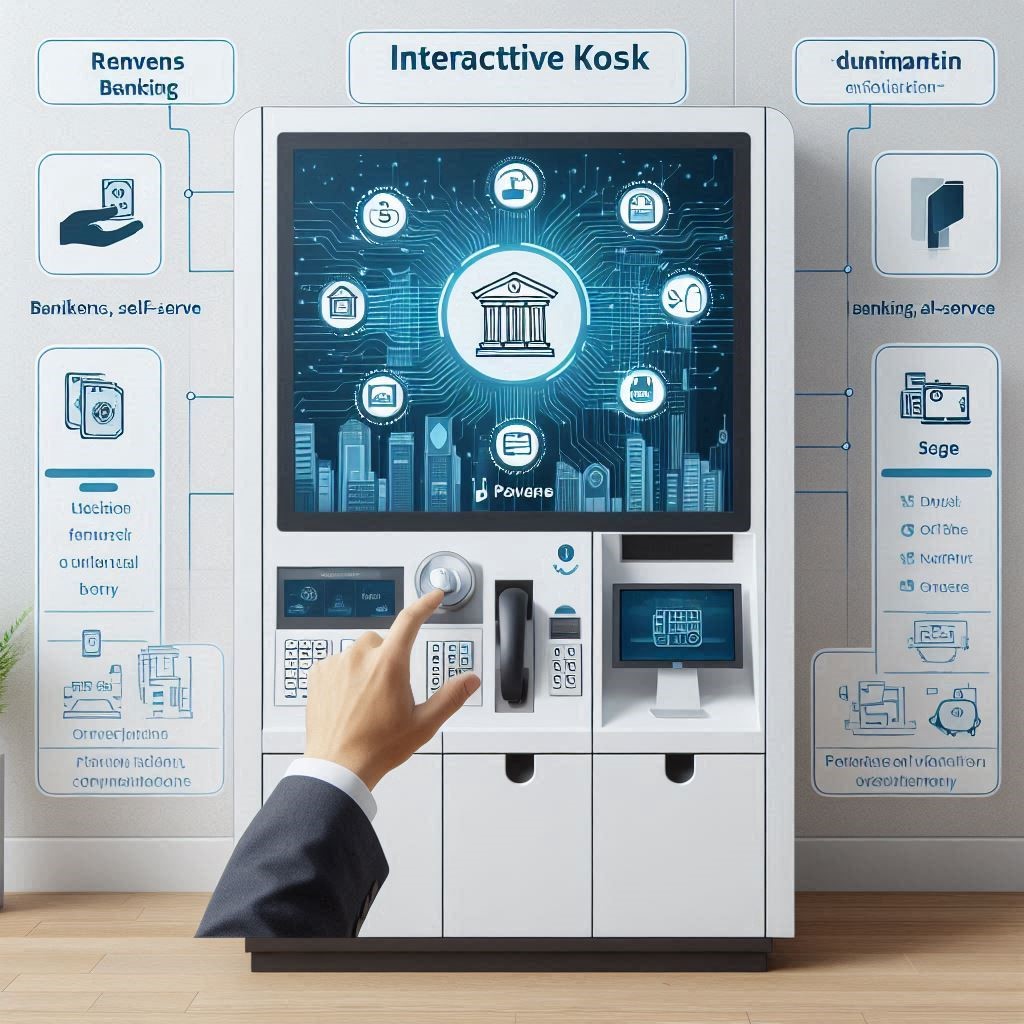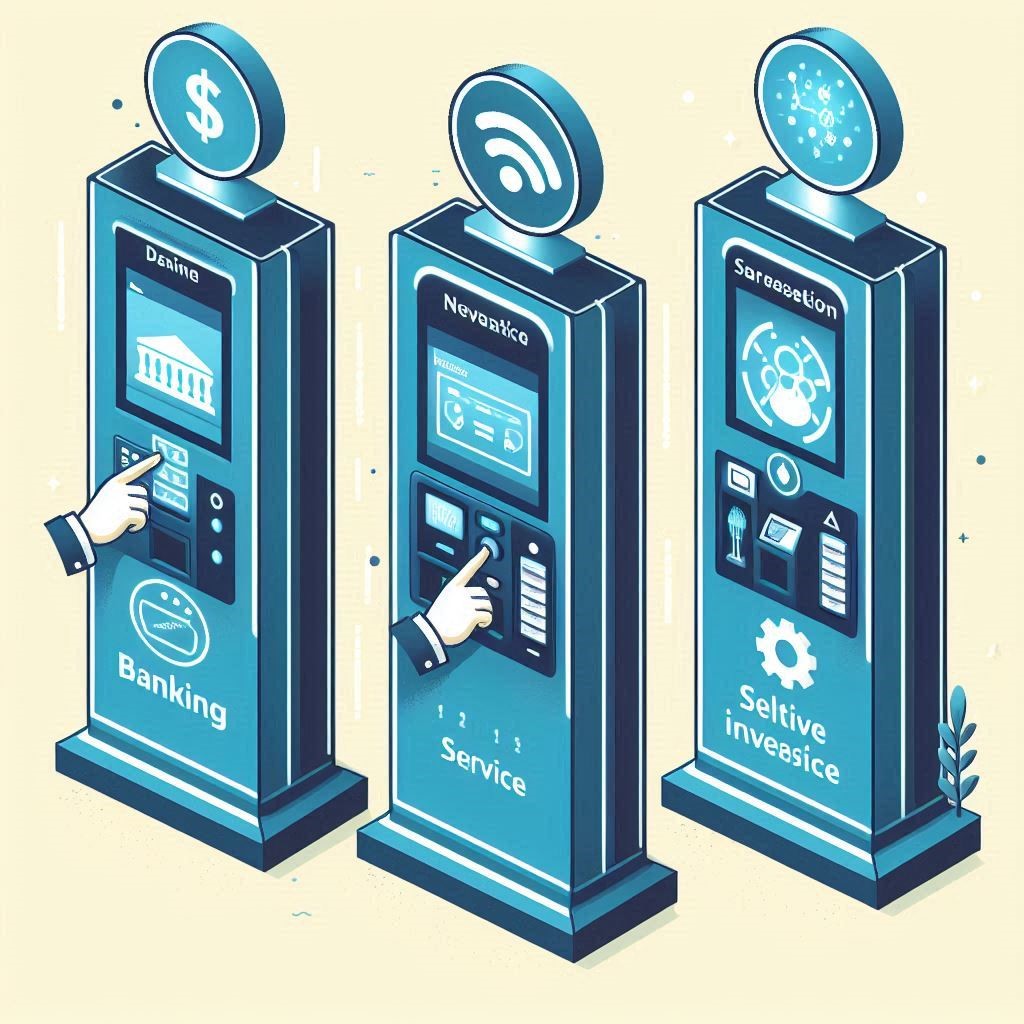The U.S. Interactive Kiosk Market is on the brink of a transformative shift, driven by the growing demand for self-service solutions in smart retail and the expanding use of digital signage across various industries. Interactive kiosks, which allow consumers to engage with technology in a seamless, intuitive way, are quickly becoming a central tool in customer engagement. As businesses increasingly seek innovative ways to enhance consumer experiences and streamline operations, the role of interactive kiosks is set to grow significantly in the coming years.
These kiosks, which offer functionalities such as self-checkout, product browsing, digital advertising, and wayfinding, are making their mark in retail, healthcare, hospitality, and public spaces. The convergence of digital technology, touchscreen interfaces, and artificial intelligence (AI) is driving this market’s rapid evolution. With advancements in technology and shifting consumer behaviors, the future of self-service kiosks looks promising, especially with the rise of smart retail environments and the expansion of digital signage applications.

A New Era for Retail: Smart Kiosks Transforming Consumer Experience
One of the most exciting developments in the interactive kiosk market is its integration into smart retail environments. Smart retail refers to the convergence of digital technology and physical retail spaces, offering consumers personalized, efficient, and immersive shopping experiences. Interactive kiosks are at the forefront of this transformation, providing a convenient and engaging way for shoppers to interact with products and services.
In brick-and-mortar retail, interactive kiosks are used for a variety of purposes:
-
Self-checkout systems: Allowing customers to scan and pay for items independently, reducing wait times and increasing operational efficiency.
-
Product browsing: Enabling customers to explore detailed product information, reviews, availability, and even personalized recommendations without needing to rely on staff.
-
Order placement: Customers can place orders for food, drinks, or other services, reducing lines and speeding up service.
These kiosks offer retailers a way to enhance the customer experience while streamlining business operations. By automating routine tasks, kiosks help reduce labor costs, increase transaction speed, and free up employees to focus on higher-value tasks such as customer service. Additionally, they create a more engaging and modern environment for consumers, driving foot traffic and customer satisfaction.
As consumer expectations continue to evolve, retail businesses are increasingly adopting kiosks to create more personalized, connected, and data-driven shopping experiences. Retailers are harnessing the power of AI and big data to offer customers personalized suggestions and promotions through kiosks, further boosting sales and customer loyalty.
Download PDF Brochure @
https://www.marketsandmarkets.com/pdfdownloadNew.asp?id=221409707
The Rise of Digital Signage and Interactive Kiosks in Public Spaces
In addition to the retail sector, interactive kiosks are finding applications in public spaces, especially in areas like transportation hubs, airports, malls, and urban environments. These kiosks often serve as part of larger digital signage networks, where content can be updated remotely and displayed in real-time.
Digital signage is becoming an essential tool for delivering dynamic and targeted content, from advertising to informational displays. Interactive kiosks equipped with digital signage capabilities are enabling users to access interactive maps, directories, event schedules, or other local services. In urban environments, these kiosks can function as information hubs, allowing residents and tourists to interact with content, navigate spaces, or access essential services with a simple touch.
For instance, wayfinding kiosks in public spaces help visitors navigate through complex buildings, malls, or campuses, providing directions and additional context about their surroundings. These kiosks can be updated with real-time information, ensuring that users are always informed about the latest events, promotions, or operational changes.
Digital signage through kiosks also allows businesses to deliver targeted advertising based on location, time of day, or even the user’s interaction history. As personalized marketing becomes more sophisticated, the combination of interactive kiosks and digital signage is creating more impactful and engaging ways to deliver content and services to consumers.

The Role of AI and Cloud Connectivity in the Growth of Interactive Kiosks
Advancements in artificial intelligence (AI) and cloud technology are also playing a critical role in the future of interactive kiosks. AI-powered kiosks can now provide enhanced customer experiences by personalizing interactions based on data insights. For example, AI can help kiosks recognize repeat customers, suggest tailored recommendations, and even adjust the interface to suit the user’s preferences. This shift towards more intelligent self-service solutions is redefining how businesses use kiosks to connect with customers.
In addition to AI, the increasing adoption of cloud-based solutions is enabling kiosks to integrate more effectively across different platforms and services. Cloud connectivity allows businesses to update content remotely, manage multiple kiosks simultaneously, and collect valuable customer data for deeper insights into consumer behavior. This data can then be used to refine marketing strategies, improve customer service, and optimize product offerings.
Key Benefits Driving the U.S. Interactive Kiosk Market
The growth of the U.S. interactive kiosk market is underpinned by several factors that continue to shape its adoption across industries:
-
Increased demand for self-service solutions: Consumers are increasingly favoring self-service technologies for their convenience, speed, and contactless features, especially in the wake of the COVID-19 pandemic.
-
Operational efficiency: Interactive kiosks help businesses reduce labor costs, streamline operations, and improve customer service by automating routine tasks.
-
Improved customer engagement: Kiosks provide businesses with opportunities to enhance customer interactions with personalized services, real-time updates, and tailored promotions.
-
Cost-effectiveness: Once installed, interactive kiosks offer long-term cost savings by reducing the need for customer service staff and enhancing operational workflows.
-
Scalability: Cloud-based systems allow businesses to deploy and scale kiosks easily, making them suitable for locations ranging from small retail stores to large public spaces.
The Future Outlook: Opportunities and Challenges
The future of the interactive kiosk market in the U.S. is incredibly bright, with continuous advancements in technology paving the way for further innovation. However, challenges remain, including ensuring cybersecurity and data privacy for users interacting with kiosks. Additionally, businesses will need to ensure that kiosks remain user-friendly for all demographics, including those who may not be familiar with touchscreen interfaces.
As the demand for smart retail and digital signage continues to rise, interactive kiosks will remain at the heart of the self-service revolution, playing a key role in shaping the future of consumer engagement. The potential for growth is significant, particularly as businesses look for new ways to create more immersive, personalized, and efficient experiences for their customers.
The U.S. interactive kiosk market is entering a new phase of growth, driven by the increasing demand for self-service solutions and the expanding role of smart retail and digital signage. With the integration of AI, cloud technologies, and data-driven insights, interactive kiosks are poised to reshape industries ranging from retail and hospitality to public services and transportation. As businesses continue to embrace these innovative technologies, the future of self-service kiosks looks more promising than ever, offering businesses and consumers alike a more efficient, personalized, and engaging way to interact with technology.
